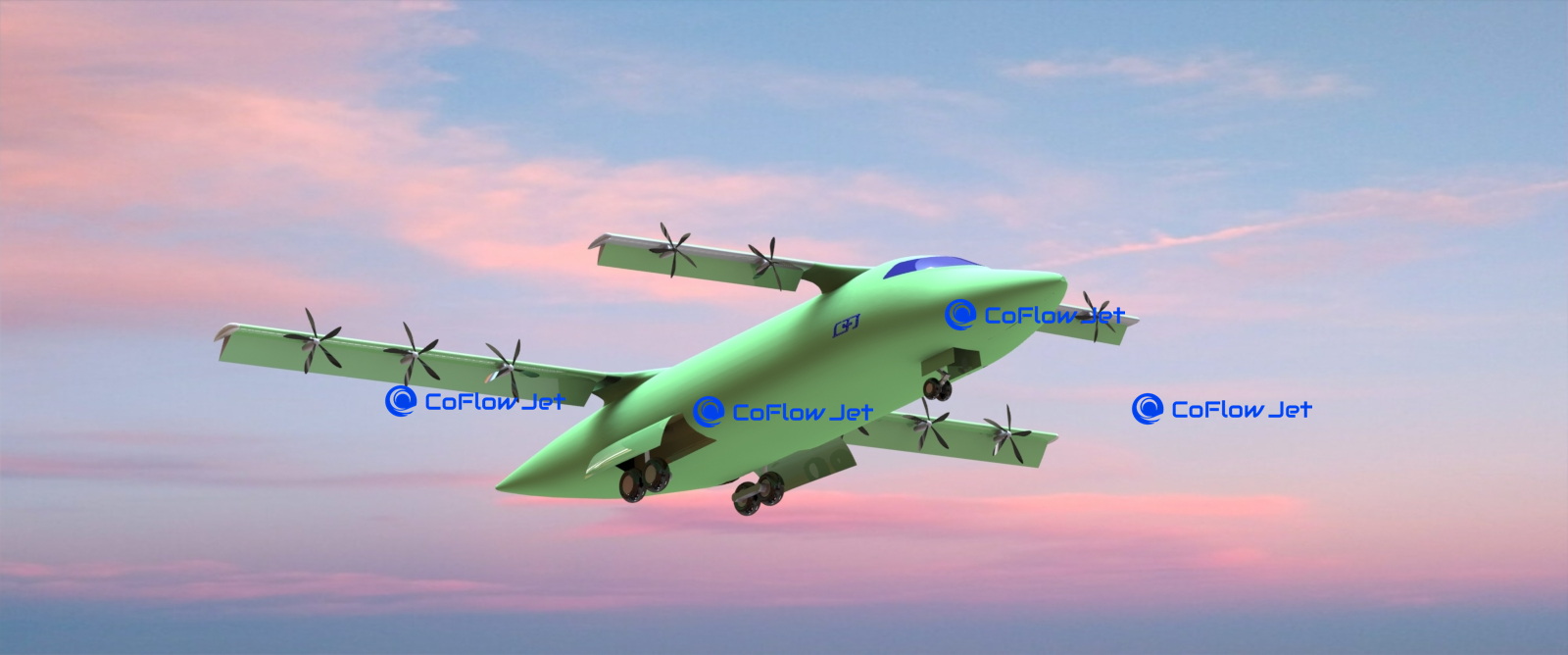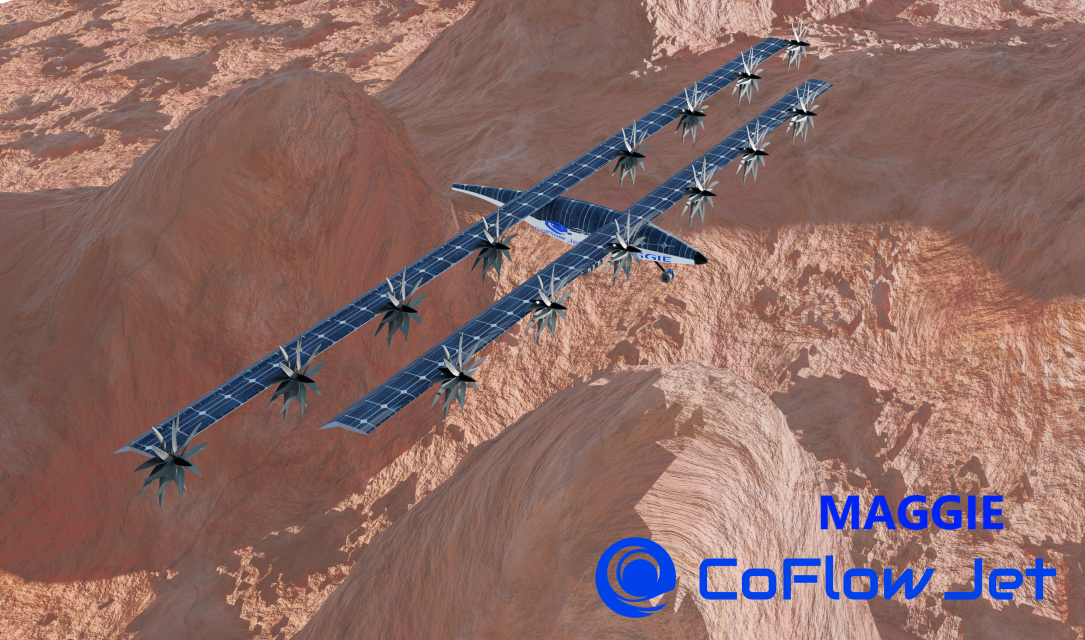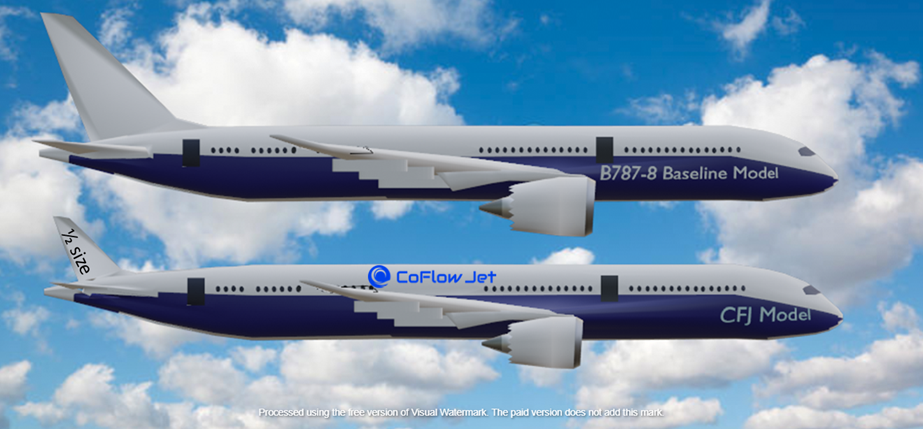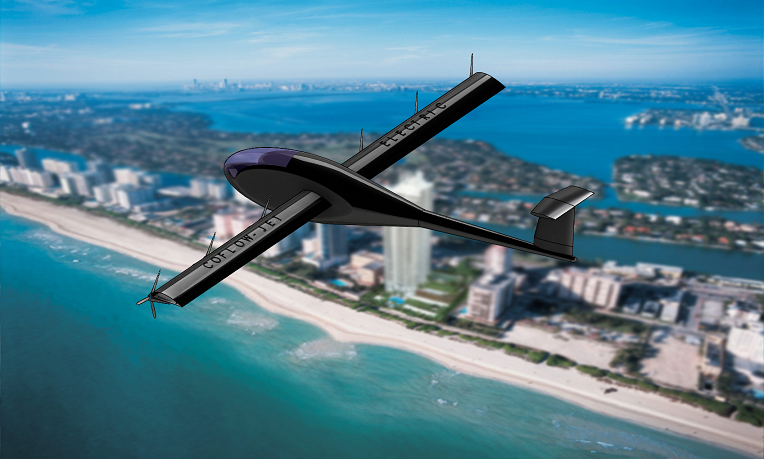Products
CoFlow Jet (CFJ) airfoil is a fundamental technology that has the potential to transform the aviation industry for all aircraft, large or small, at subsonic, transonic and supersonic speeds. It will increase aircraft efficiency, range, safety, and reduce energy consumption and noise.
2nd Gen eV/STOL: We are developing 2nd generation (2nd Gen) electric vertical/short takeoff landing (eV/STOL) for short haul and urban transportation. Unlike the current 1st generation (1G) fixed wing eVTOLs, the 2nd Gen eV/STOL does not use articulating propellers, or tilting wings, or lift plus configuration. The propellers are always fixed facing the cruise direction. The innovative 2G eVTOL technology developed jointly by our company and NASA naturally combines the electric VTOL and short takeoff/landing (STOL) features together by using deflected slipstream (DS) enabled by coflow jet. The technology is thus abbreviated as CFJ-DS-eV/STOL. The deflected slipstream technology generates hover lift by deflecting the slipstream from the propeller downward using a deflected single plain flap as shown in Figure on the right. Once airborne, the flap is retracted for high-speed cruise. A 90deg deflected slipstream would turn a full horizontal propeller thrust to a vertical lift. However, a 90deg DS flow turning can be only achieved by applying CFJ in the flap. Otherwise, the flow suffers severe separation when the flap angle is large and the required lift will not be achieved. Simply using a small flap deflection angle will achieve STOL performance if there is a short runway to save energy. It combines VTOL and STOL in one platform straightforwardly.
Benefits: CFJ-DS-eV/STOL does not use tiltrotors, tiltwings, or lift plus configurations required by 1G eVTOL and thus substantially reduces system complexity, weight and increases safety. It enables electric V/STOL aircraft with ultra-high productivity efficiency with ranges substantially increased, high safety, low noise, high flight comfort, high readiness of certification, and high public acceptance. Here is a YouTube video showing the operation of 2nd Gen eVTOL vehicle: 2nd Generation (2G) eVTOL enabled by deflected slipstream with CoFlow Jet technology (youtube.com)
MAGGIE: Our MAGGIE (Mars Aerial and Ground Global Intelligent Explorer) concept (the figure below), which uses the same CFJ-DS-eVTOL technology, is selected by NASA NIAC program to potentially fly on Mars for science mission exploration. The project is a teamwork with the vehicle concept developed by CoFlow Jet, LLC, the science missions developed by JPL and Purdue University.
Here is a video showing the MAGGIE’s mission:
Mars Aerial and Ground Global Intelligent Explorer (MAGGIE), the Mission. – YouTube
Here are two NASA news releases for MAGGIE:
Mars Aerial and Ground Global Intelligent Explorer (MAGGIE) – NASA
Funding Future Tech: NASA Names 2024 Innovative Concept Studies – NASA


CoFlow Jet (CFJ) Empennage: While we are developing the 2nd Gen eV/STOL, we are also developing CFJ empennage to generate revenue faster. Current aircraft employ large empennage (horizontal and vertical tails) to ensure control authority. However, the large control surfaces penalize the aircraft system with high weight and drag. Due to the high lift coefficient, CoFLow Jet empennage can reduce the size by half and maintain the same or better control authority. Our study indicates that a 50% reduced empennage for B787 can reduce fuel by 13% (see the figure below and the paper here: https://acfdlab.miami.edu/publications/6.2023-3366-b787.pdf). The reduced empennage can apply to all aircraft, large or small, subsonic or supersonic.

Long Range eCTOL: It is very challenging to develop long range electric conventional teakoff/landing (eCTOL) aircraft due to the low battery power density. The first eCTOL product we have designed is a general aviation(GA) electric CFJ airplane shown below. It carries 4 passengers with a range of 360 miles and cruise speed of 221 Miles/h. It is based on current Li-Ion battery power density of 250Wh/kg. With the battery technology continuing to be developed, the aircraft payload and range will be increased scalable to the increasing battery power density. We use the ultra high aerodynamic efficiency to compensate the current low battery power density in order to achieve a range more than twice longer than a same size conventional design. The aircraft also has a very short takeoff/landing distance with very low noise due to the ultra-high lift coefficient. A distributed propulsion system is used to ensure high safety and reliability.

We have started to study applying CFJ to electric transonic aircraft with cruise speed of 500miles/h, which is far more difficult than the GA due to its much higher cruise speed that is near the speed of sound. The following is a conceptual design of a electric CFJ regional airliner with 20 passengers. We believe the CFJ wing with its superior performance is the most promising unique technology for zero emission electric aircraft. Our mission is to develop and deliver the most advanced environment friendly aircraft to the world.


